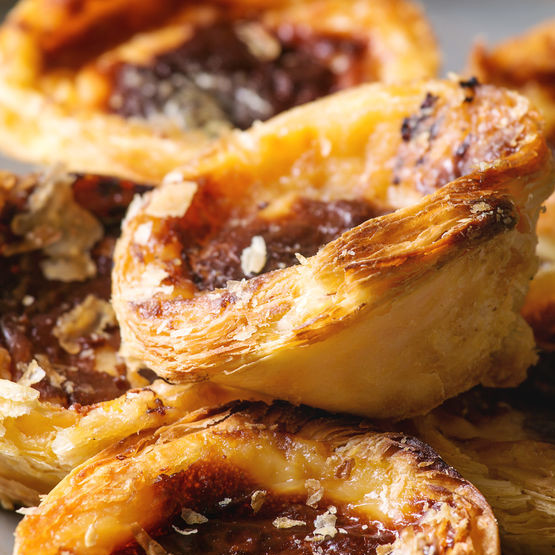Pastry Flour
What is Pastry Flour?
Pastry flour is a powder produced from milling soft white or soft red wheats. This type of flour usually has low absorption and little mixing tolerance. Its properties are intermediate between bread and cake flours. It is used to make:1
- Laminated products (e.g. croissants, Danish and puff pastry)
- Cake donuts
- Low-ratio cakes, pies and tarts
- Cookies and crackers
- Muffins and quick breads
- Pancakes, waffles and wafers
Origin
Pastry flour was specifically developed to make sweet baked goods which required some of the attributes of hard and soft wheats. Decades ago, millers and bakers from all over the world used to blend hard and soft wheat flours to obtain the desired characteristics in the finished flour.
Nowadays, pastry flour is milled from soft wheats. Soft red winter wheat is typically grown in the Eastern United States, while soft white wheat is primarily grown in the Northwest United States. The wheat is harvested and delivered to flour mills to grind into flour.
Function
Wheat flour is the main ingredient in most baked goods. In wheat bread, gluten is the key protein in the development of the dough’s protein matrix that traps air and gas molecules. In cakes and other applications, wheat flour provides the starch which helps form the structure via starch gelatinization.
Commercial pastry flour is usually bleached although it can be obtained free from additives. Bleaching the flour reduces its natural yellow pigmentation, giving it a brighter white color.
Commercial production
The flour used for cookies and pie crust production is normally long patent or straight grade flour. Its production process follows similar principles to those of hard wheat milling. However, conditions specific to soft wheat milling should be observed, namely:1,3
- Special handling given the lower specific weight of the kernel
- Shorter tempering times (soft wheat endosperm is not as vitreous and dense as that of hard wheats and water absorption is faster)
- Adjusting sieve aperture and air velocities during cleaning
- Soft wheat disintegrates during milling with less pressure than is necessary to break hard wheat. As a result, soft wheat produces finer average flour particles with lower levels of starch damage
Application
Pastry flour physicochemical specifications
- Protein content: 9.0–10.0%
- Ash: 0.3–0.5% (varies with % extraction)
- pH: 5.9–6.1
- Damaged starch: 2.5–4.0. Values vary according to kernel hardness, % extraction, tempering and milling conditions
- Particle size index (PSI): 20–35% (AACCI Method 55-30)
- Dry gluten: 7.0–8.0
- Falling Number: 350–500 s
- Particle size distribution smaller than bread flour
Pastry flour rheological characteristics
- Alveograph P/L value < 0.65
- Farinograph absorption at about 500 UB dough consistency lower than bread flour and higher than cake flours
- Mixolab C2 value < 0.4 Nxm
- Mixolab Mixing and Gluten+ Indexes correspond to those of weak flours
Most types of sweet baked goods use pastry flour or a low-protein flour to ensure final product tenderness. When low gluten development and a tender or flaky texture are desired, pastry flour is generally used to obtain these desired textures.
References
- Finnie, S., and Atwell, W.A. “Products from Soft Wheat Flour.” Wheat Flour, 2nd edition, AACC International, Inc., 2016, pp. 111–129.
- Posner, E.S., and Hibbs, A.N. “Milling of Soft Wheat.” Wheat Flour Milling, 2nd edition, AACC International, Inc., 2005, pp. 353–364.
- Posner, E.S. “Wheat Flour Milling.” Wheat Chemistry and Technology, 4th edition, AACC International, Inc., 2009, pp. 119–152.


